Q
What Are the Dimensions of BYD Seal? Get to Know Here
The BYD Seal is a Class D pure-electric sedan. It has a body length of 4,800 mm, a width of 1,875 mm, a height of 1,460 mm, and a wheelbase of 2,920 mm. These dimensions result in a relatively spacious interior, offering passengers a comfortable riding experience. In particular, the legroom and headroom for rear passengers are quite impressive. Meanwhile, the reasonable wheelbase ensures good driving stability for the vehicle.
Moreover, its trunk has a capacity of 400 liters, which can meet the loading needs for daily trips and short - distance travels. Among vehicles in the same class, the BYD Seal's overall dimensions and space performance are quite competitive, and it can well meet the diverse usage scenarios of family and individual users.
Special Disclaimer: This content is published by users and does not represent the views or position of PCauto.
Related Q&A
Q
What Segment Does BYD Seal Belong to?
The BYD Seal belongs to the D-segment cars. D-segment cars are typically mid to large-sized vehicles, well-known for striking a balance between space, comfort, and performance.
The BYD Seal has a body length of 4,800 millimeters, a width of 1,875 millimeters, and a wheelbase of 2,920 millimeters, offering passengers a relatively spacious interior. The trunk space is also quite decent. Such specification makes it suitable for comfortable long - distance trips and can meet the sufficient space requirements for daily use. Moreover, in terms of performance, the Seal provides different versions with various power outputs. It can provide a smooth daily driving experience and also offer a more exciting high - performance driving feel. Whether for family users or individual users who desire more space and better performance in their vehicles, the D - segment BYD Seal is an appealing choice.
Q
What's the Reslae Value of BYD Seal?
The BYD Seal, a relatively new electric vehicle in the Malaysian market, currently lacks complete data on its resale value, but general resale value for EVs can provide some references. Due to rapid advancements in EV technology, the resale value of electric vehicles typically declines slightly faster than that of comparable internal combustion engine (ICE) vehicles in the first three years—around 50%-60% for EVs versus 60%-70% for ICE cars.
Key factors influencing resale value include battery health (BYD offers an 8-year/160,000 km battery warranty), growing brand recognition (BYD has shown strong performance in recent years), and the maturity of EV infrastructure (such as charging network development). Compared to similar ICE vehicles, the BYD Seal's extended battery warranty and lower operating costs (electricity being significantly cheaper than fuel) may help mitigate depreciation.
For prospective buyers, it is advisable to consider certified pre-owned programs and maintain complete service records to preserve resale value. As EV adoption increases, more definitive resale value data will be provided.
Q
What's the Displacement of BYD Seal?
The BYD Seal is an electric vehicle, so it doesn't use the traditional "CC" (cubic centimeters, used to measure internal combustion engine displacement) as a metric. It provides different versions, such as the Dynamic EV, Premium (Extended Range), and Performance AWD. In terms of the powertrain, the Dynamic EV version has a total motor power of 150kW, a maximum horsepower of 204PS, and a total torque of 310N·m. The Premium (Extended Range) version has a total motor power of 230kW, a maximum horsepower of 308PS, and a torque of 360N·m. The Performance AWD version is more powerful, with a combined system power of 390kW, a combined horsepower of 523PS, and a combined torque of 670N·m. These motors can provide efficient and strong power output, meeting different consumers' needs for speed, range, etc. Moreover, the all - electric drive also complies with the current trend of environmental protection and energy conservation.
Q
What's the PCD Size of BYD Seal?
The PCD (Pitch Circle Diameter) of the BYD Seal is 5×114.3, which means the wheel hub has 5 bolt holes evenly distributed on a circle with a diameter of 114.3 millimeters, matching the standard used by many mainstream Japanese vehicles (such as Honda and Toyota). So, it's easy to find compatible wheel hub options for modification or replacement in the Malaysian market.
Beyond PCD, wheel modifications also require attention to other parameters, including the hub bore (recommended to use OEM-concentric hub rings for precise fitting), offset (ET value), and wheel width to avoid affecting suspension geometry or causing friction. For wheel upgrades, it is advisable to choose EV-rated products that can accommodate the Seal's battery weight and prioritize purchasing through BYD-certified channels to ensure safety and compatibility.
Q
Does BYD Seal Support Apple Carplay?
The BYD Seal doesn't have the Apple CarPlay feature. Apple CarPlay is a system developed by Apple Inc., which allows iPhone users to connect their devices to the in-vehicle infotainment system. Although some car models in the market support this feature, the BYD Seal isn't one of them.
However, the BYD Seal has its own advanced infotainment system. It's equipped with a 15.6 - inch intelligent rotating touchscreen, which can provide a wide range of entertainment and vehicle control functions. This car also adopts a comprehensive set of standard configurations, such as various safety systems, comfortable seats with multiple adjustment options, and a high - quality sound system with 12 Dynaudio speakers. Even though the Seal doesn't have Apple CarPlay, its own infotainment capabilities can still bring users a convenient and pleasant driving experience.
Q
What's the Brand of BYD Seal's Tire?
The original tires of the BYD Seal are usually high-performance tires from Michelin or Continental. The specific tire models might be Pilot Sport EV or EcoContact 6, which are optimized for electric vehicles to match its powerful performance and noise reduction requirements. These tires are characterized by a low rolling resistance to improve the vehicle's range, the reinforced structures to handle the additional weight of EVs, and noise-reducing tread patterns to minimize road noise.
If you need to replace the tires, it is recommended to choose EV - specific tires of the same specifications. Pay attention to the size markings such as 235/45 R19 or 245/40 R20 (depending on the specific vehicle configuration), and also consider the wet - surface grip and wear - resistance index. When purchasing, you can go through BYD's official services or authorized tire dealers to ensure you get products that are suitable for the characteristics of electric vehicles.
Q
Is BYD Seal a Good Choice? Learn the Pros and Cons Here
The BYD Seal is a truly outstanding electric sedan that boasts high competitiveness in the Malaysian market. It's equipped with BYD's advanced e-Platform 3.0 technology and efficient Blade Batteries, offering excellent range performance (up to approximately 570 kilometers under the WLTP standard) and fast charging capabilities, which perfectly meet the local long - distance driving needs.
This car stands out with its remarkable power performance. The dual - motor all - wheel drive version can accelerate from 0 to 100 km/h in just 3.8 seconds. The driving experience is comparable to that of high - performance fuel - powered vehicles. Meanwhile, the electric system provides a smooth and quiet ride.
The interior uses high - quality materials and has luxury features such as a 15.6 - inch rotating central control screen and a Dynaudio sound system. It's also equipped with BYD's DiPilot intelligent driving assistance system to enhance driving safety.
As a pure - electric vehicle, it outperforms traditional fuel - powered cars in terms of maintenance costs, environmental - friendliness, and technology equipment. Although the price is not low, compared with other vehicles in the same class (like the Tesla Model 3), it has advantages in terms of cost - effectiveness and local after - sales service. It's a great choice for Malaysian consumers who are looking for high performance and low vehicle - using costs.
Q
What's the Width of BYD Seal?
The width of all BYD Seal variants is uniformly 1875mm. Vehicle width refers to the horizontal distance between the outermost rigid fixed protrusions on both sides within the vehicle's longitudinal symmetrical plane. This width dimension not only influences the visual effect of the vehicle's exterior, giving it a more imposing and stable appearance, but also affects the interior space layout, indicating a relatively spacious lateral cabin area, providing a more comfortable riding experience for both drivers and passengers, particularly ensuring rear occupants do not feel overly cramped. Additionally, during driving, the width contributes to stability to a certain extent, with an appropriate width helping to enhance the vehicle's stability during high-speed driving or cornering.
Q
What's the Road Tax of BYD Seal? How to Calculate It?
Currently, all electric vehicles registered in Malaysia are exempt from road tax, with the tax exemption period set to expire at the end of 2025. Starting from January 1, 2026, the road tax rates for electric vehicles will be calculated in tiers based on the vehicle's motor power:
The first tier applies to EVs with motor power below 100kW, where the tax increases by RM10 for every additional 10kW. The second tier applies to vehicles with 100kW to 210kW, where the tax increases by RM20 for every additional 10kW. The third tier covers EVs with power between 210kW (exclusive) and 310kW, where the tax increases by RM30 for every additional 10kW.
Taking the BYD Seal models as an example:
The 2024 BYD Seal Dynamic EV, with a total motor power of 150kW, falls under the second tier. Since it exceeds 100kW by 50kW, the road tax is calculated at RM20 per 10kW, resulting in RM100.
The 2024 BYD Seal Premium (Extended Range), with a total motor power of 230kW, falls under the third tier. Exceeding 210kW by 20kW, the road tax amounts to RM60.
The 2024 BYD Seal Performance AWD, with a total motor power of 390kW, also falls under the third tier. Exceeding 210kW by 180kW, the road tax is calculated at RM540.
Q
What‘s the Oil Capacity of BYD Seal's Engine?
The BYD Seal is an electric vehicle (EV), so it doesn't require engine oil but is powered by electric motors.
The three variants of the BYD Seal, namely the 2024 BYD Seal Dynamic EV, 2024 BYD Seal Premium (Extended Range), and 2024 BYD Seal Performance AWD, all run on electricity. They adopt battery systems like the BYD Blade Battery or Lithium iron phosphate battery for energy storage, and electric drivetrains.
For EVs, maintenance focuses more on battery health, charging system checks, and the condition of electric components rather than engine oil changes, making them more environmentally friendly and often require less frequent maintenance compared with traditional gasoline or diesel-powered cars.
Latest Q&A
Q
How to reset the tire pressure sensor in Honda Civic?
To reset the TPMS on your Honda Civic, start by turning the ignition to the "on" position without starting the engine. Then, locate the "TPMS" button on the dashboard or navigate to the vehicle settings menu via the infotainment screen. Select the "Tire Pressure Calibration" option and follow the prompts to complete the reset. Afterward, drive normally for about 10 minutes to let the system automatically learn the new tire pressure data.
It's worth noting that the process can vary slightly between Civic model years. Newer models might offer touchscreen controls, while older ones may require using the steering wheel buttons to cycle through menus. For Malaysian owners, given the hot climate, it's a good idea to check your tire pressure—including the spare—once a month. High temperatures can cause pressure to rise, and improper tire pressure doesn't just hurt fuel economy and handling; it can also speed up tire wear.
If the TPMS light stays on after resetting, the sensor battery might be dead or you could have a slow leak. In that case, it's best to head to a professional workshop for further diagnosis. Also, TPMS sensor batteries typically last 5-7 years, and when replacing them, sticking with OEM parts is recommended to ensure compatibility.
Q
How much is a Honda Civic 2024
The 2024 Honda Civic's pricing in Malaysia varies depending on the trim level and specs, typically ranging from around RM130,000 to RM160,000. For the most up-to-date figures and any ongoing promotions, your best bet is to hit up your local authorized Honda dealer.
As a Honda staple, the Civic has long been a favorite among Malaysian drivers, thanks to its solid reliability, sleek looks, and tech-forward features. The 2024 model steps things up even more in the safety and driver assistance department—expect it to come equipped with the Honda Sensing suite, which includes handy features like adaptive cruise control and lane-keeping assist.
Another big plus for the Civic in Malaysia? Its fuel efficiency and wallet-friendly maintenance costs. If you're in the market for a compact sedan, this one's definitely worth a spot on your shortlist. Of course, it's not without competition—rivals like the Toyota Corolla and Mazda 3 are also vying for attention. At the end of the day, it all comes down to your personal taste and budget, so take the time to compare them side by side.
Q
Which tyre brand is the best for Honda Civic?
When it comes to picking the right tires for your Honda Civic in Malaysia, you’ve got to factor in our local road conditions, climate, and your driving style. The Michelin Pilot Sport 4 or Primacy 4 lines are solid go-tos—they strike a nice balance between dry and wet grip, durability, and noise levels, matching the Civic’s sporty character pretty well. If comfort and long mileage are your top priorities, especially for those frequent highway runs, the Bridgestone Turanza T005A leans more that way. On a tighter budget? The Continental UC6 or Goodyear Assurance TripleMax 2 still deliver reliable daily driving performance with better value for money.
Since Malaysia gets a fair amount of rain, prioritizing tires with high wet performance ratings (like an A rating on the EU label) is smart. Also, make sure the size matches your factory specs—common ones are 215/50 R17 or 225/45 R18. Keeping an eye on tire pressure (around 230-240 kPa) and checking tread wear regularly will help them last longer. If you often hit rough roads, consider models with reinforced sidewalls, though they might nudge fuel consumption up a tiny bit.
Q
How to update the satellite navigation system of Honda Civic ?
To update the satellite navigation system in your Honda Civic, first you need to confirm your car's model year and navigation system version, since different model years might use different update methods. For newer Honda Civics, you can get the latest navigation map update package from the official Honda Malaysia website or an authorized dealership. Usually, you'll need to download it to a USB drive and then plug that into your car's USB port to install. If you have an older model, you might have to head to a dealership where they can do the update using special equipment. It's a good idea to back up your existing data before updating and make sure your car battery is fully charged to avoid any interruptions. Also, updating your navigation system regularly not only gets you the latest road info but also boosts system performance—like faster route calculations and more accurate real-time traffic data. If you're not sure how to do the update yourself, it's best to contact Honda Malaysia's customer service or book an appointment with a dealership to help out, so the update goes smoothly. In the meantime, you could also use smartphone navigation apps like Waze or Google Maps as a temporary alternative—they usually offer real-time updates and more features anyway.
Q
What engine does a 2015 Honda Civic have?
The 2015 Honda Civic in Malaysia came with two engine options: a 1.8-liter SOHC i-VTEC four-cylinder naturally aspirated unit and a 2.0-liter SOHC i-VTEC four-cylinder naturally aspirated engine. The 1.8L puts out 141 horsepower and 174 Nm of torque, while the 2.0L ups the ante to 155 hp and 190 Nm. Both are paired with a 5-speed automatic transmission, delivering smooth driving dynamics and solid fuel efficiency.
What really stands out is Honda's i-VTEC tech – it smartly adjusts valve timing and lift to optimize performance and efficiency across different engine speeds, making it perfect for Malaysia's mix of city commutes and highway runs. The 2015 Civic also built a strong reputation locally for being durable and easy on maintenance costs. Honda clearly thought about our tropical climate too – the engine's cooling system and electronics are tweaked to handle the heat and humidity, ensuring reliable operation even when things get sweltering.
For Malaysian buyers, the 2015 Civic's engines offer more than enough power for daily driving, and their long-term running costs are pretty reasonable. No wonder it's still a hot pick in the used car market.
View MoreRelated News

2025 BYD Seal Coming to Malaysia with DiSus-C Adaptive Suspension
JohnAug 13, 2025
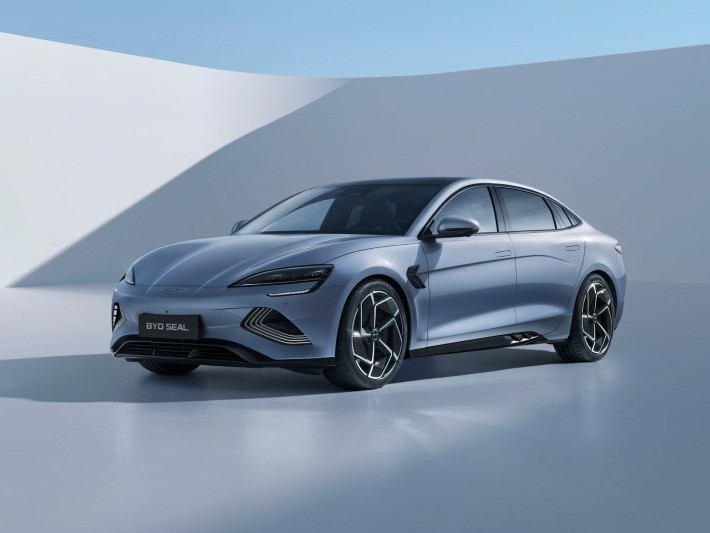
BYD Seal interior design revealed: A fusion of modern technology and luxury
RobertJul 15, 2025
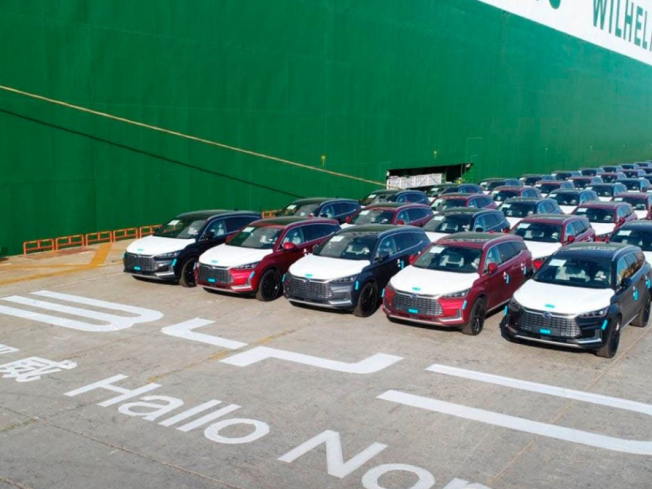
BYD Exports 214K Vehicles in Q1, Top Sales in 7 Markets
RobertApr 30, 2025
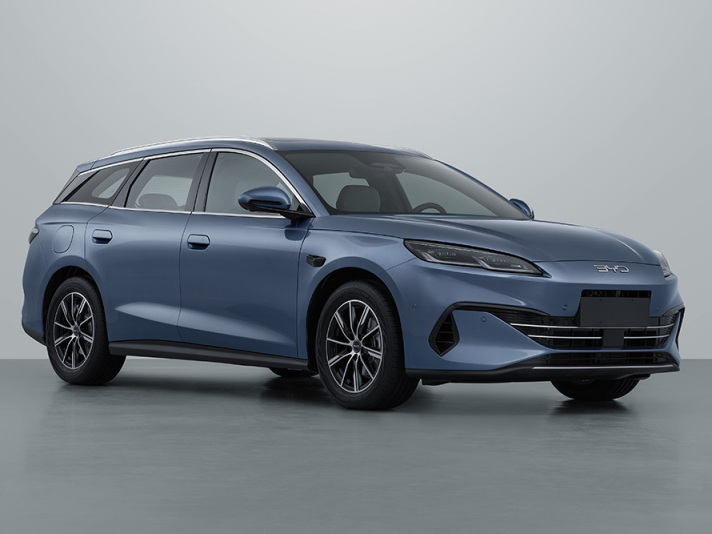
Photos of the BYD Seal 06 Touring Edition Reveal the Brand's Entry into a New Niche Market
JamesMar 24, 2025
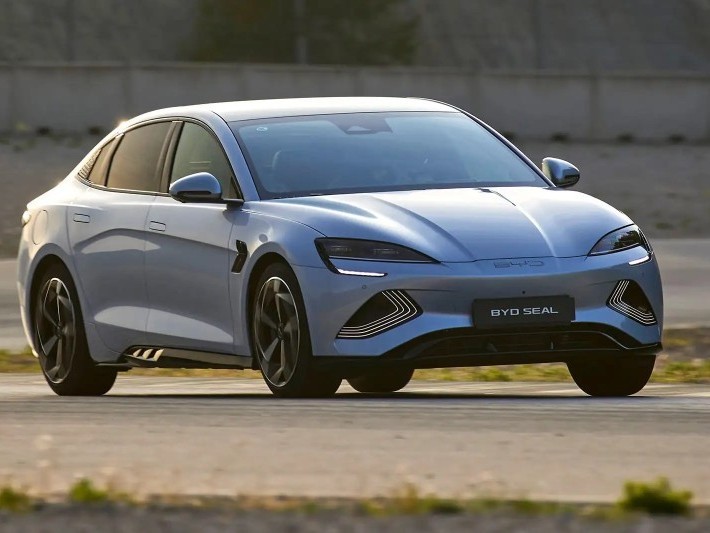
BYD Wins Japan's Annual EV Award Again with Seal
MichaelMar 6, 2025
View More












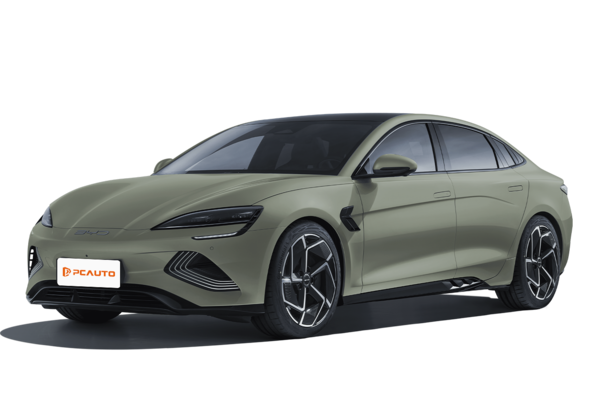




Pros
Cons